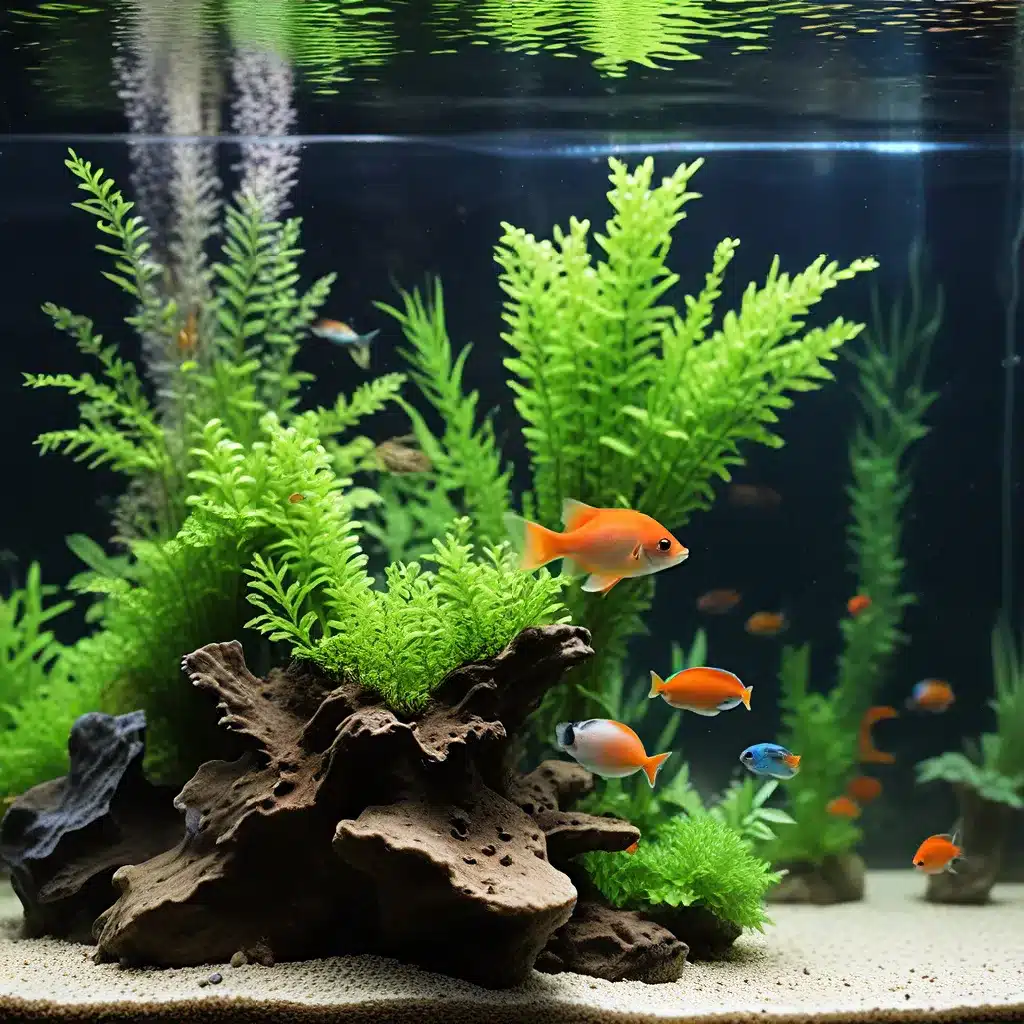
Understanding the Importance of pH Stability
Maintaining stable water parameters is a critical aspect of aquarium management, and pH stability is one of the most important factors to consider. Dramatic fluctuations in pH can have detrimental effects on the health and well-being of your aquatic inhabitants, leading to stress, disease, and even mortality.
In natural aquatic environments, pH levels can naturally fluctuate due to factors like rainfall, photosynthesis, and decomposition. However, in the confined space of an aquarium, these changes can occur much more rapidly, posing a significant challenge for aquarists. Sudden pH swings can disrupt the delicate balance of the aquarium ecosystem, affecting the solubility of nutrients, the effectiveness of water treatment chemicals, and the overall physiological functioning of your fish, plants, and beneficial bacteria.
Identifying Causes of pH Fluctuations
Understanding the common causes of pH fluctuations is the first step in developing effective strategies to maintain stable water conditions. Some of the primary factors that can contribute to pH instability in aquariums include:
- Evaporation: As water evaporates from the aquarium, the concentration of dissolved solids, including minerals and organic compounds, increases, leading to changes in pH.
- Photosynthesis and Respiration: The daily cycles of photosynthesis and respiration by aquatic plants and algae can cause fluctuations in CO2 levels, which directly impact pH.
- Waste Accumulation: The breakdown of fish waste, uneaten food, and other organic matter can release acidic compounds that lower the pH over time.
- Improper Water Conditioning: Using tap water or insufficient water conditioners can introduce substances that disrupt the pH balance.
- Inadequate Buffering Capacity: Aquariums with insufficient alkalinity or carbonate hardness may be more susceptible to pH swings.
By recognizing these potential sources of pH instability, aquarists can implement targeted strategies to mitigate the issue and maintain a stable aquarium environment.
Strategies for Maintaining Stable pH
To combat pH fluctuations and create a thriving aquarium ecosystem, consider implementing the following strategies:
Regular Water Exchanges
Performing routine partial water changes is one of the most effective ways to maintain stable pH levels. By replacing a portion of the aquarium water with fresh, properly conditioned water, you can dilute the concentration of dissolved solids and organic compounds that can contribute to pH changes.
King Aquarium recommends conducting weekly water changes of 10-25% to help regulate pH and replenish essential minerals. This practice not only stabilizes the pH but also removes waste, replenishes oxygen, and supports the overall health of your aquarium inhabitants.
Proper Water Conditioning
Ensuring that you use high-quality, pH-stable water conditioners when performing water changes is crucial. Look for products that contain buffers, chelators, and other ingredients designed to maintain a consistent pH and provide the necessary minerals for your aquarium’s ecosystem.
Avoid using tap water directly, as it may contain chlorine, heavy metals, or other contaminants that can disrupt the pH balance. Instead, consider using reverse osmosis (RO) or deionized (DI) water, which can be treated with appropriate aquarium-safe additives to create a stable, balanced water chemistry.
Enhancing Buffering Capacity
Increasing the aquarium’s buffering capacity can help mitigate pH swings by providing a more stable foundation for the water chemistry. This can be achieved through the use of crushed coral, aragonite, or other calcium-based substrates, which release carbonate ions to help maintain a consistent pH.
Alternatively, you can supplement the aquarium with commercial pH buffers or alkalinity-boosting products, following the manufacturer’s instructions carefully to find the right balance for your specific setup.
Monitoring and Adjustments
Regular monitoring of pH levels is crucial to identify and address any fluctuations promptly. Use a reliable pH test kit or digital pH meter to regularly check the water and make necessary adjustments.
If you notice significant pH changes, take immediate action to restore stability. This may involve performing a partial water change, adjusting the dosage of pH-regulating products, or addressing underlying issues like excessive waste buildup or imbalances in the aquarium’s biological filtration.
Incorporating Aquascaping Techniques
Aquascaping, the art of designing and maintaining aesthetically pleasing underwater landscapes, can also play a role in maintaining stable pH conditions. Certain plant species and natural materials used in aquascaping can have a direct impact on the aquarium’s water chemistry.
pH-Regulating Plant Selection
Choosing pH-tolerant or pH-regulating plant species can help stabilize the aquarium’s water conditions. Some plants, like Cryptocoryne and Anubias, are known to thrive in a wide range of pH levels and can help buffer against rapid changes.
Conversely, fast-growing plants that actively consume CO2 during photosynthesis can contribute to significant pH fluctuations. Carefully selecting a balanced mix of plant species can help maintain a more stable pH environment.
Incorporating Natural Materials
The use of natural aquarium substrates, driftwood, and botanicals can also impact the aquarium’s pH and buffering capacity. For example, peat moss, alder cones, and other tannin-rich materials can lower the pH by releasing organic acids, creating a blackwater-style aquarium.
On the other hand, crushed coral, limestone, and aragonite can help increase the aquarium’s alkalinity and maintain a stable pH. Incorporating these natural materials into your aquascaping design can be a valuable tool for managing water chemistry.
Proactive Monitoring and Adjustments
Maintaining a stable pH in your aquarium is an ongoing process that requires diligent monitoring, proactive adjustments, and a deep understanding of your aquarium’s unique chemistry.
By addressing the root causes of pH fluctuations, implementing effective water management strategies, and leveraging the power of aquascaping techniques, you can create a thriving, visually stunning aquarium that provides a healthy, stress-free environment for your aquatic inhabitants.
Remember, consistency and patience are key when it comes to combating pH instability. With the right approach and a commitment to aquarium maintenance, you can ensure the long-term success and well-being of your aquatic ecosystem.

